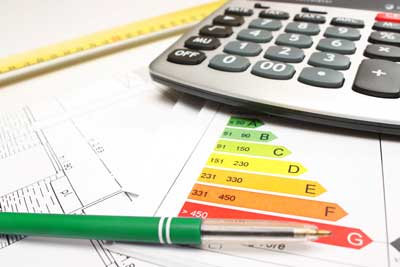
 Monitoring energy consumption across your entire site, including equipment and processes, can improve both operational and energy performance, says Rob Leak, Inprova Energy head of energy solutions.
Monitoring energy consumption across your entire site, including equipment and processes, can improve both operational and energy performance, says Rob Leak, Inprova Energy head of energy solutions.
Gaining a deep understanding of how and when you are consuming energy is vital for informing an energy efficiency strategy, but it can often pay even greater dividends in improving operational efficiency.
By applying circuit-level monitoring to energy-consuming equipment, devices and processes, you can gain deeper, and sometimes surprising, insights. This can help minimise downtime and increase productivity, while reducing waste and costs.
Circuit-level monitoring, using sensor technology, will provide a real-time view of how lighting circuits, distribution boards, pumps, drives, air conditioning, compressed air systems, refrigerators, production lines, and so on are performing. You can pinpoint excessive and abnormal energy use patterns and find areas of waste, such as out of hours consumption. This granular-level analysis may highlight anomalies that could signal serious operational issues, such as faulty equipment or sluggish processes. You are then in a position to diagnose and rectify these issues before they become major problems that result in operational disruption or machine breakdown. Circuit-level monitoring can also be applied to gas and water.
Gathering data
It’s also important to gain a top-level overview of your site’s energy consumption. A wealth of data is freely available via bills and half-hourly and sub-meter readings. Such readings are a useful starting point, but will only tell you what’s flowing through the meter and may only provide generic information, particularly if one meter serves a number of buildings. Many sites will have access to building energy management and control systems, which should be able to provide more comprehensive insights and analytics.
Power factor monitoring
Poor power factor can result in reactive power charges and excess power consumption – costing hundreds and even thousands of pounds for larger sites. Penalty reactive charges in power bills may be the first indication that you have a problem. Fortunately, it’s relatively easy to correct power factor, and remedial action can pay back rapidly. It is advisable to monitor site-wide power quality to identify other potential problems and adopt a combined solution.
Supply capacity
Power factor control is also important in avoiding supply capacity breaches, which can be a costly error since the recent DCP161 policy change. This introduced a penalty on businesses that exceed the limits of their agreed supply capacity (ASC) and could add as much as 2% to the power bills of larger energy consumers. Achieving the right balance is important, since setting your ASC too high will result in paying for unused capacity.
To keep supply capacity in perfect balance, it is necessary to monitor and measure maximum power demand, but this is complex. It’s not simply a matter of comparing maximum active power consumption in kW with your ASC. Your ASC is affected by active power in kW and reactive power in kVAr, so it is necessary to measure both.
 Interpreting data
Interpreting data
Data is, of course, meaningless without analysis, which can be simplified using automated software and hardware systems to produce reports at the level of detail you require.
It’s important to understand the shape of your baseline consumption profile for “normal” weather, “normal” production processes or occupancy levels, and “average” energy waste. In this way, you can make sense of the data and understand where any unexpected spikes are occurring. You can use software to set up automatic prompts and alerts for when energy consumption operates outside the normal profile.
By understanding what your normal energy consumption pattern looks like, you are well placed to ask the right questions that will lead to identifying irregularities and taking the right remedial measures. This should help inform your maintenance strategy as well as achieving energy savings and guiding energy efficiency strategy. It will also help to guide energy load shifting to avoid peak-time charging periods, such as Triads.

